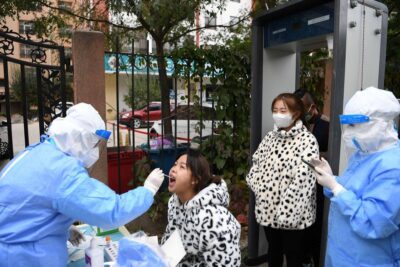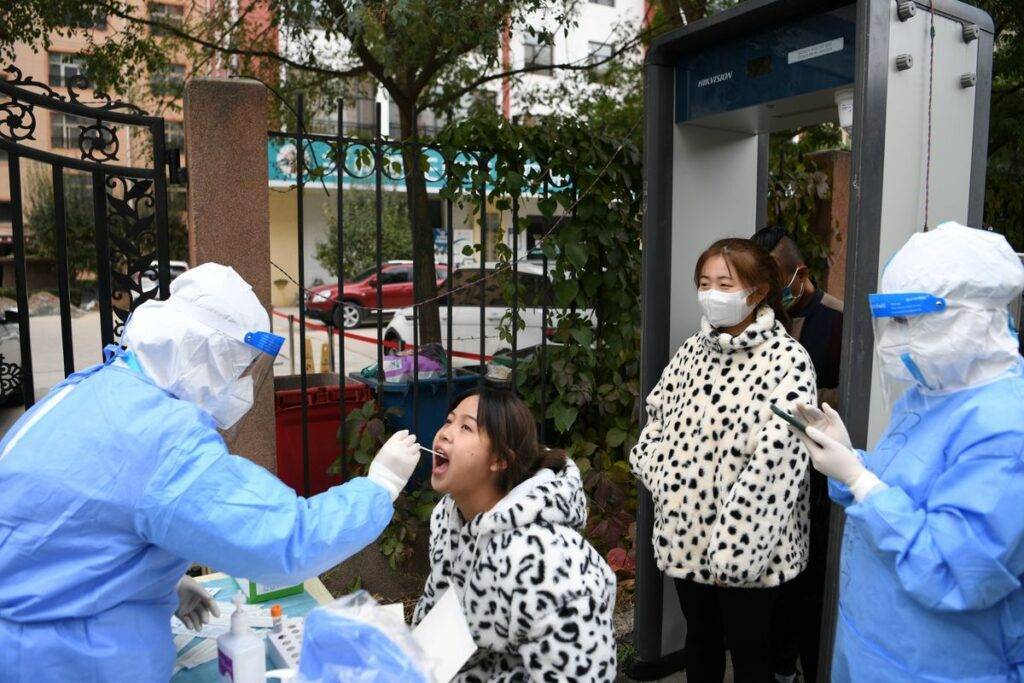
Since two tourists from Shanghai were discovered COVID-19 positive on October 16 in Northwest China’s Shaanxi Province, this wave of COVID19 outbreak has spread to at least ten provinces and municipalities as of Thursday.
The virus gene sequencing of the infected patient in Beijing revealed that this wave points to the Delta variant, but the original source of transmission remains unknown.
Epidemiologists concluded that because of its extensive experience in dealing with sporadic outbreaks, and as vaccination rates rise, China is better positioned to contain sporadic outbreaks.
They also urged the public to be cautious as winter approaches and the original source of infection is still unknown.

Six days have passed, but the transmission links associated with this resurgence continue to grow.
The National Health Commission reported 13 confirmed cases and seven asymptomatic cases on Wednesday, affecting Gansu, Ningxia, Inner Mongolia, Hubei, Hunan, Hebei, Guizhou, and Yunnan across the country.
On Thursday, Beijing reported one case, and Baoding, a city in North China’s Hebei Province, reported two people who had visited scenic areas in Inner Mongolia and Gansu’s Zhangye.
The same day, three coronavirus-positive cases were reported in southwest China’s Guizhou Province.
At a press conference on Thursday, Pang Xinghuo, deputy director of the Beijing CDC, said that virus gene sequencing revealed that the case in Beijing was the Delta variant and belonged to the same transmission link as cases reported in Northwest China’s Gansu and Shaanxi provinces.
The spread began with a tour group transmission chain in Shanghai, and the situation has grown increasingly complex as more tour group transmission chains have emerged.
Amid rising infections linked to Gansu Province, which reported six new cases on Thursday and was also the hardest-hit region during this outbreak, authorities there required a negative nucleic acid report within 24 hours before people left through the capital Lanzhou’s airport and closed all elementary and secondary schools in Lanzhou.
According to travel app Umetrip, the number of cancelled flights to and from Northwest China’s Gansu and Shaanxi provinces reached 56 percent and 58 percent, respectively, on Thursday, while it reached 41 percent in Inner Mongolia.
Across China, provinces and cities are stepping up efforts to screen for COVID-19 infections.
Ningxia has ordered that anyone who has visited Lanzhou since October 5 and Ejina Banner since October 1 report to local authorities for testing.
Similar notices were issued by Shaanxi Province. Hubei Province has proposed that close contacts take place by the end of September.
According to the notices, close contacts with the current outbreak may have occurred since October 1.
According to official data, 515 million domestic trips were made from October 1 to 7, China’s National Day holiday.
A public health expert in Beijing named Wang did not rule out that the possibility of this flare-up beginning with the National Day holidays.
To cut off tourism transmissions, Hangzhou in East China’s Zhejiang province halted travel to nine locations in Shaanxi, Ningxia, Gansu, and Inner Mongolia.
Despite the National Day holidays, Wang believes the outbreak is unlikely to spread nationwide because emerging cases have revealed clear transmission routes, the majority of which are linked to provinces in North and Northwest China.
According to Shao Yiming, a leading physician and immunologist at the Chinese Center for Disease Control and Prevention (China CDC), sporadic outbreaks are common, particularly after the National Day holidays.
Even without a massive vaccination rate, China was able to halt the epidemic’s resurgence following last year’s National Day holidays. More than 80% of Chinese people are now fully vaccinated.
In the past, China’s epidemic prevention and control strategy had proven effective, and now that vaccinations have built an immune barrier, China is better positioned to contain sporadic outbreaks, according to Shao.
More cases are likely to be reported because the original transmission sources have yet to be discovered. Wang speculated that the scale of this wave may be comparable to that of Nanjing.
People who meet the criteria, according to Shao, should get booster shots as soon as possible due to the waning level of antibodies over time.
Booster shots have been administered to people who have been fully vaccinated for six months in at least 20 provinces and municipalities, including Beijing.



